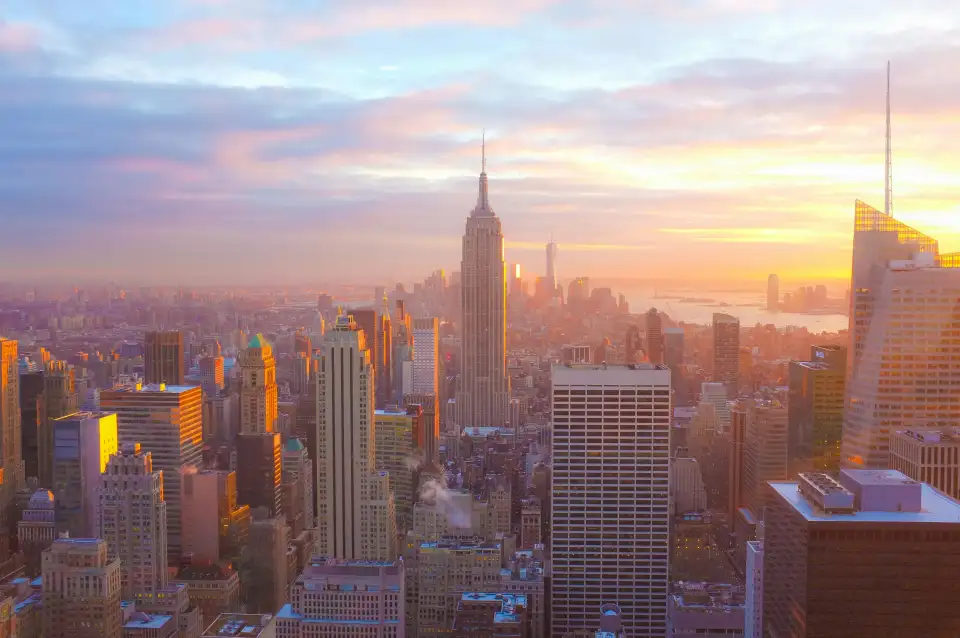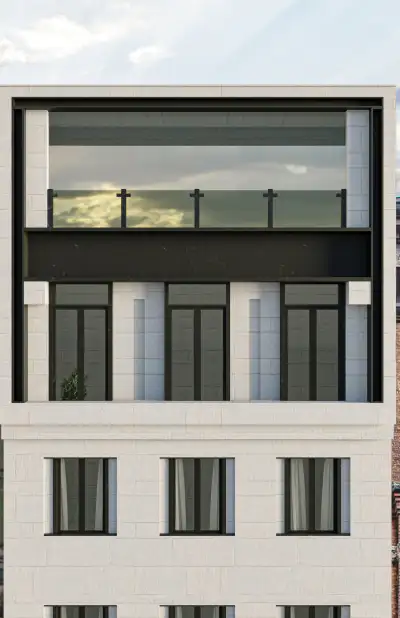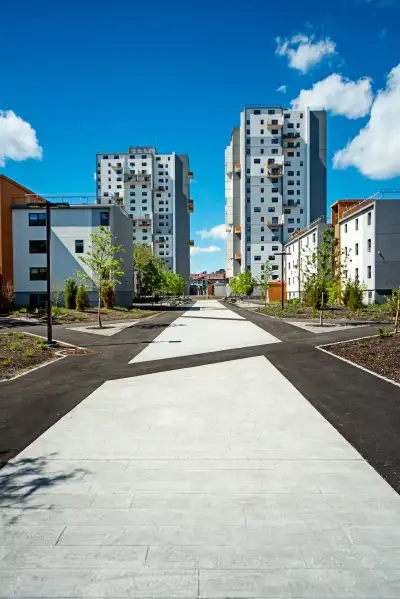The Climate Mobilization Act - Local Law 97 (LL97) was passed by the New York City Council and went into effect on November 15, 2019 as part of New York City's Green New Deal. This legislation sets limits on greenhouse gas (GHG) emissions for nearly 50,000 of New York City's largest buildings. At the same time, the Department of Buildings created the Office of Building Energy and Emissions Performance (OBEEP) to oversee the implementation and compliance of the NYC Local Law 97.

Demystifying Local Law 97
Understanding Local Law 97
In December 2022, the NYC Department of Buildings (DOB) established building emissions limits (carbon ft2) based on property type, size, and compliance year. Beginning in 2024, these limits reflect variation in energy use between 60 different property type, as defined by ENERGY STAR Portfolio Manager. The limits take effect over four compliance periods, from 2024 to 2049, with stricter requirements as time goes by and allows for a gradual reduction in a building’s carbon emissions.

Why NYC Adopted Local Law 97
Buildings generate over two-thirds of New York's greenhouse gas emissions. Reducing these emissions will improve air quality, benefit human health and prevent economic losses due to lower agricultural yields, reduced labor productivity, and decreased industrial output.
By focusing LL97 on the city’s most prominent buildings, the Climate Mobilization Act predicts the following outcomes in New York City by 2030:
A 10 percent reduction in New York City’s overall emissions
Decrease dependency on fossil fuels
Lowering energy bills for building owners
Reduced of 6 million tons of greenhouse gases, equivalent to taking 1.3 million cars off the road yearly
Creation of 26,700 green jobs
Reduced exposure to harmful air pollution, preventing 50 to 130 premature deaths annually and eliminating 150 hospital visits each year
Local Law 97 aims to reduce emissions produced by New York City’s buildings by 40 percent by 2030, and 80 percent by 2050. Local Law 97 applies to the following covered buildings, with some exceptions:
Buildings exceeding 25,000 gross ft2
Two or more buildings on the same tax lot collectively surpassing 50,000 ft2
Two or more buildings managed by the same condo association exceeding 50,000 ft2.
Exemptions from NYC's LL97
Certain buildings are exempt from carbon emission limits, including:
Industrial facilities primarily used to generate electric power or steam
Multi-family dwellings of three stories or fewer, with no central HVAC or hot water system
City buildings
Non-profit hospitals and healthcare facilities
New York Housing Authority's housing developments or land
Buildings classified as a group A-3 religious house of worship
Rent regulated housing
Real estate owned by a housing development fund company and organized by Article 11 of the private housing finance law and the business corporation law
Properties that participate in a project-based federal housing program
Impacts of LL97
Upgrading a building’s energy efficiency to comply with LL97 can be costly, yet the benefits are substantial:
Enhances tenant satisfaction and reduce turnover due to improved comfort and affordability
Increased property value and marketability through high-performance installations
Reduced carbon footprint contributing to a cleaner, healthier community
Lowers operating expenses improving the building’s financial bottom line.
Compliance and Reporting
Starting January 1, 2024, building owners must comply with the first round of emission limits. By May 1, 2025, they must file an annual report with the Office of Building Energy and Emissions Performance (OBEEP) detailing their yearly greenhouse gas emissions, verified by a Registered Design Professional.

Timeline and Target
LL97’s emissions caps will become stricter over successive periods: 2024- 2029, 2030-2034, 2035-2039, 2040-2049, and 2050 - outward. Key milestones include:
December 31, 2024: The Prescriptive Pathway mandates specific energy conservation measures
January 2025: Limited annual emissions for covered buildings for 2024 to 2029 begins. However, types of affordable housing and buildings (under the law’s Article 321 prescriptive path) have altered or delayed requirements.
May 1, 2025: First emissions report submission deadline.
June 2025: City-owned buildings must achieve a 40 percent reduction below 2006 emissions
January 1, 2026: OBEEP’s first compliance report to the mayor
January 2030: New stricter emissions limits begin
June 2030: City-owned buildings must achieve a 50 percent reduction below 2006 emissions
January 2035: Stricter emissions limits and new mandates for income-restricted housing
January 2050: All covered buildings must meet a zero-emission factor
Preparing for Local Law 97
Building owners should assess their current energy use and emissions, enhance energy efficiency, and stay informed about carbon emissions. These steps include:
Determine Your Building Current Energy Usage and Carbon Emissions: Use the ENERGY STAR Portfolio Manager® Building Emissions Calculator
Reduce Energy use: Implement sensors, replace windows and doors, use energy-efficient lighting, upgrade HVAC systems, and improve the building envelope
Sto Corp. offers a variety of energy-efficient, code-compliant building envelope solutions that include continuous insulation and air and water-resistive barriers applicable for renovation projects and new construction.
Compliance with LL97 will foster a sustainable, productive, and healthier environment, while enhancing property value and reducing costs. The initial carbon emission limits start this year, with compliance periods extending through 2050.